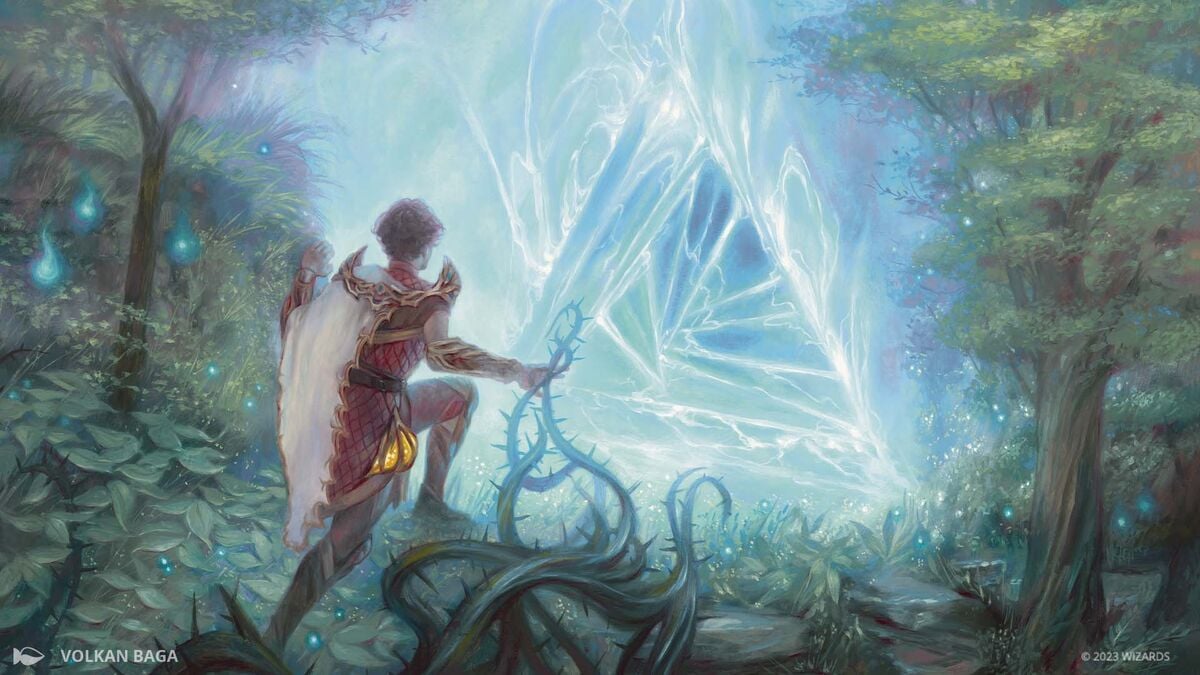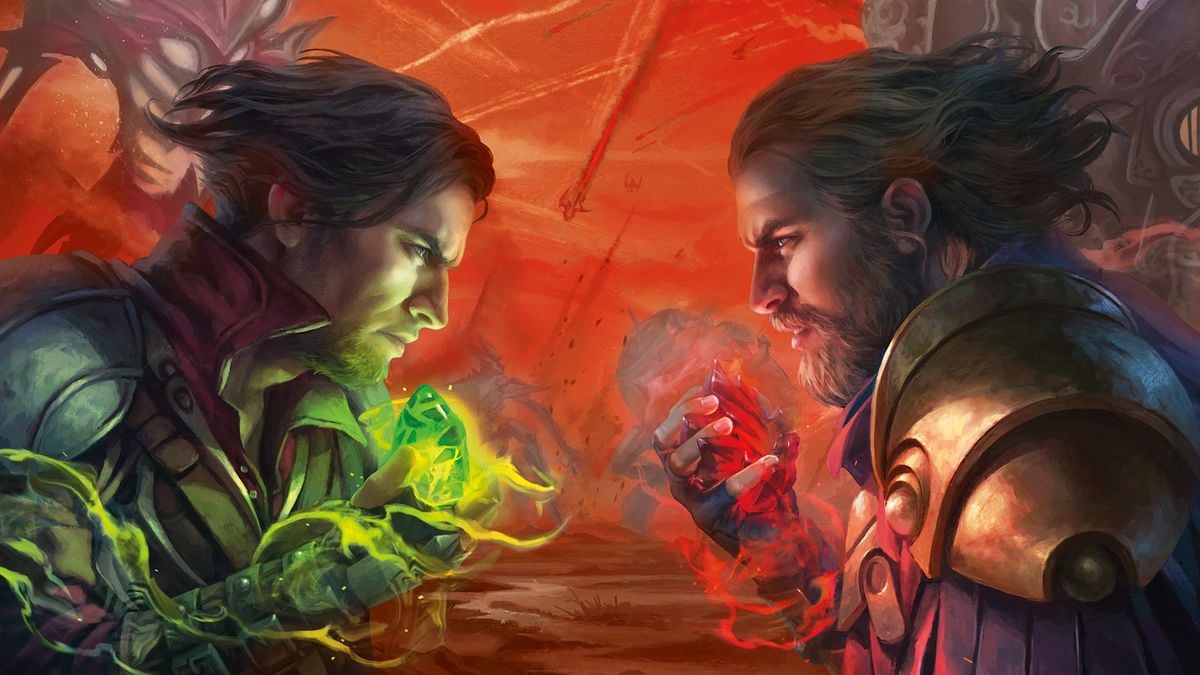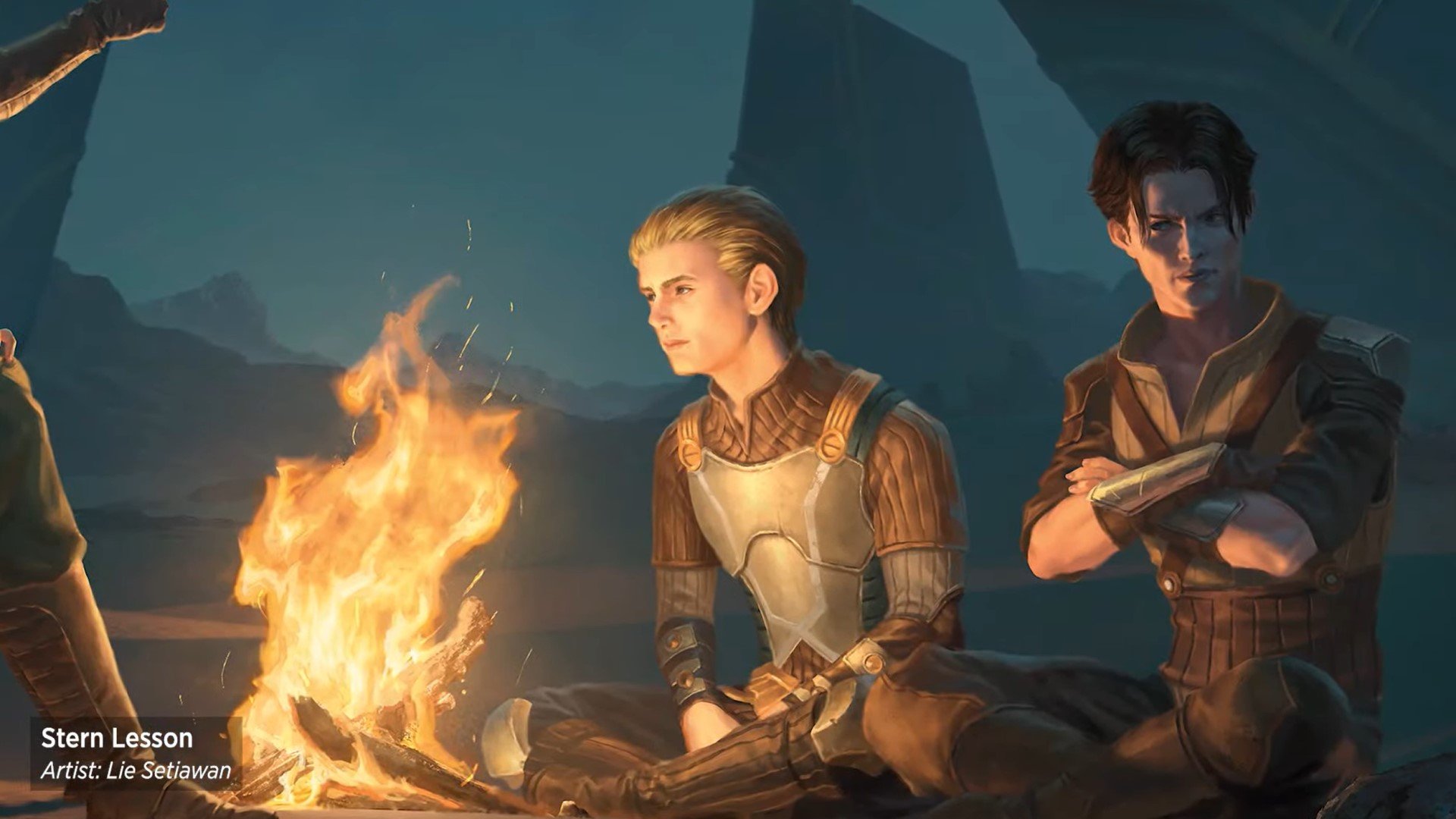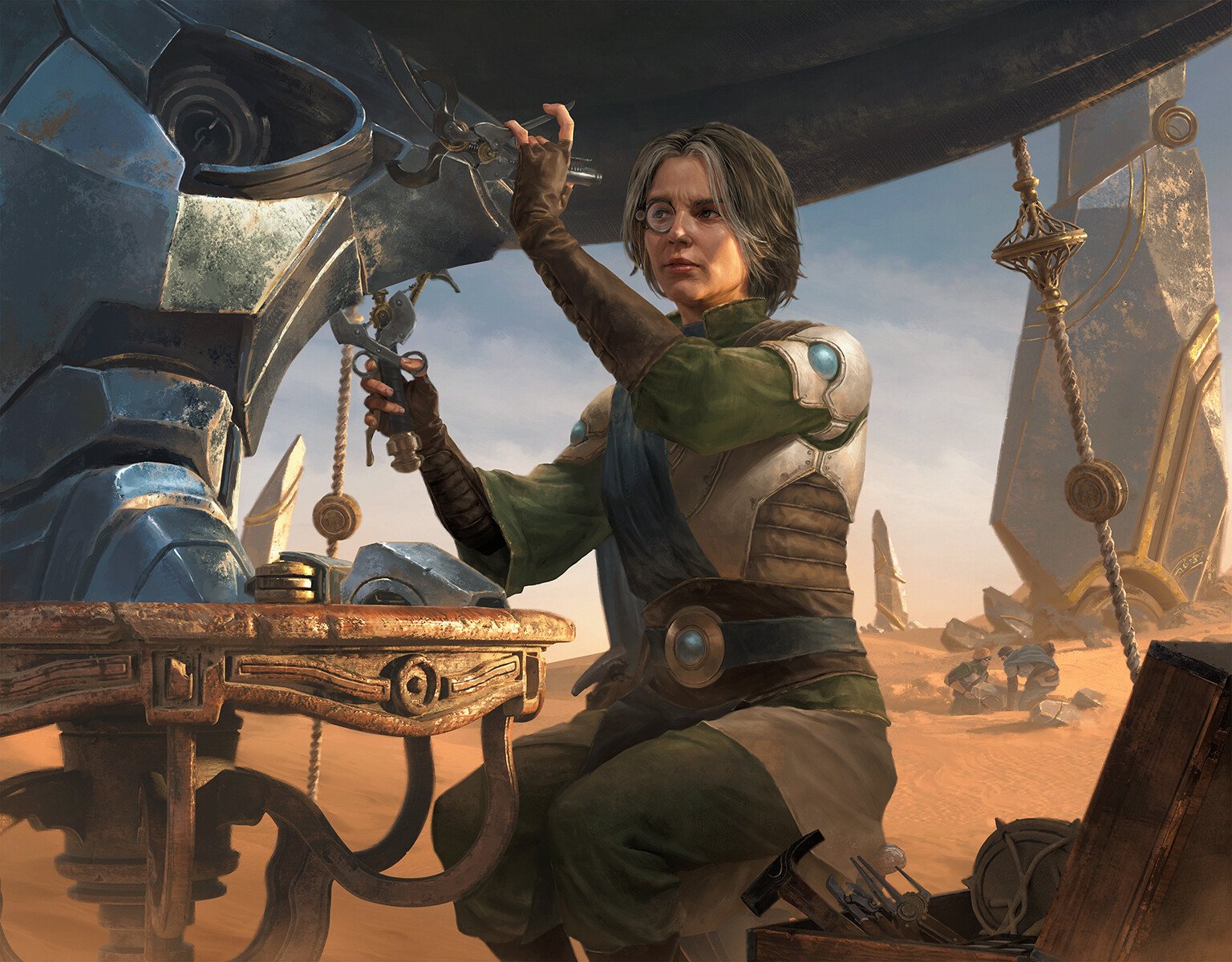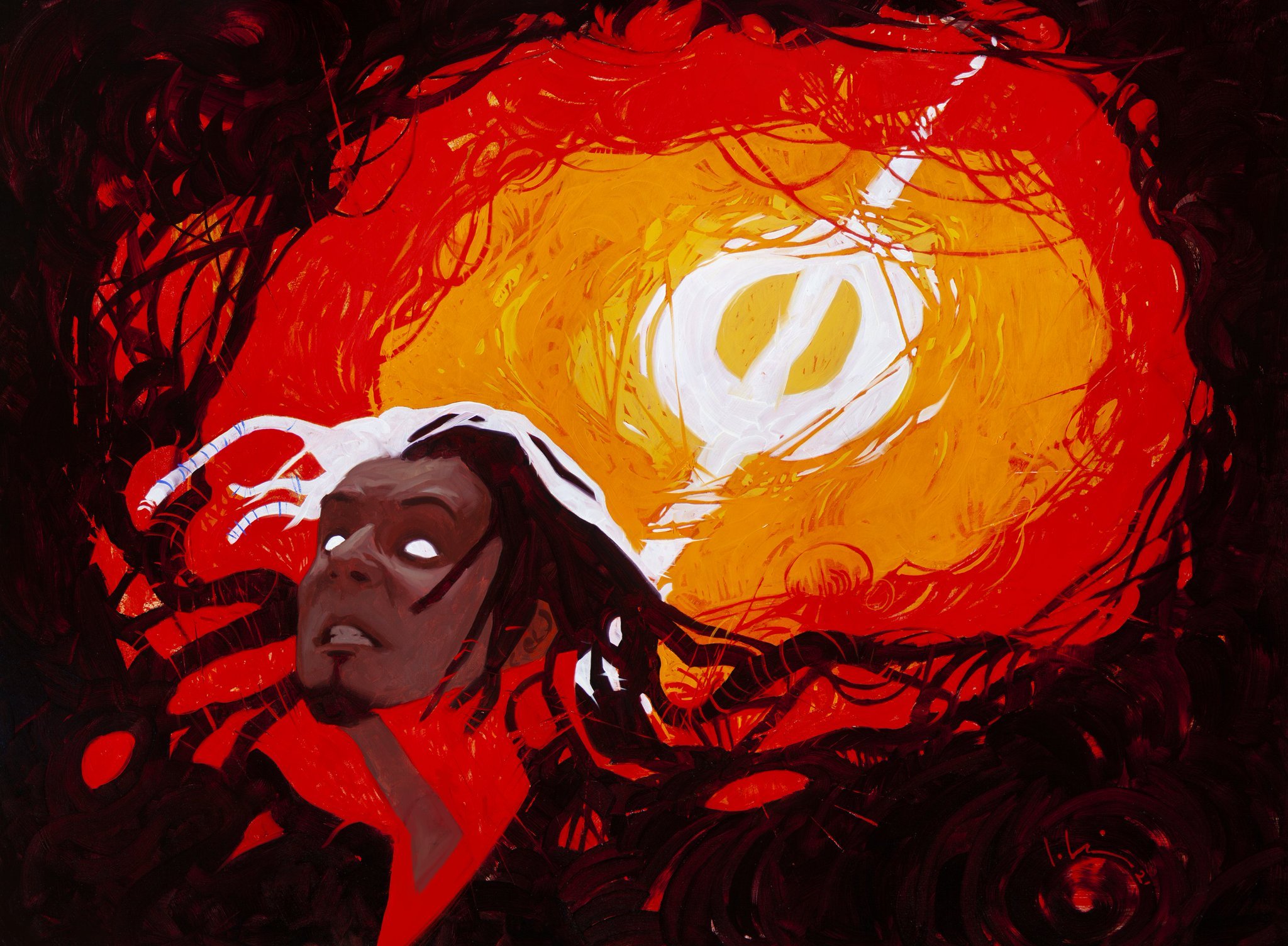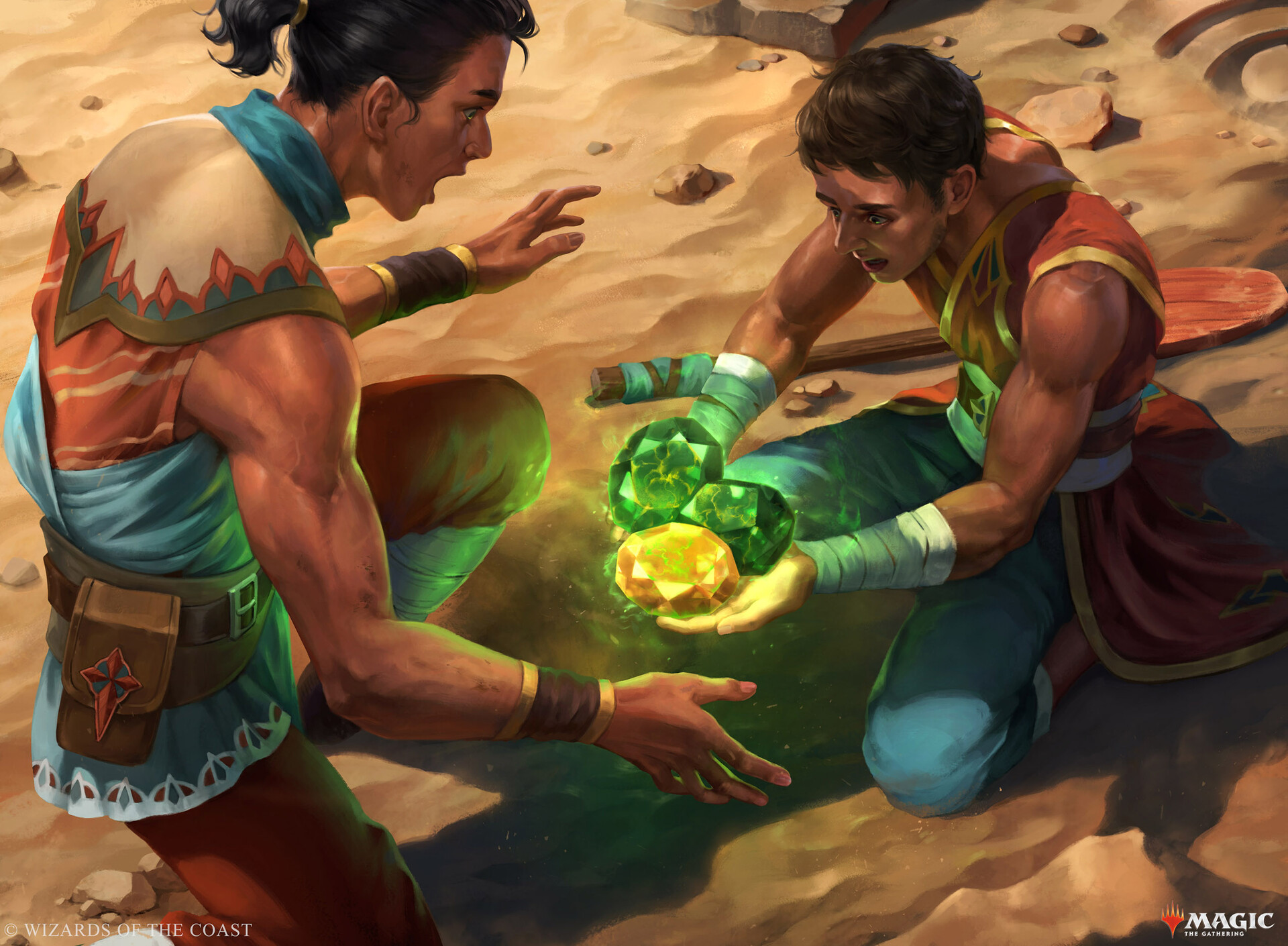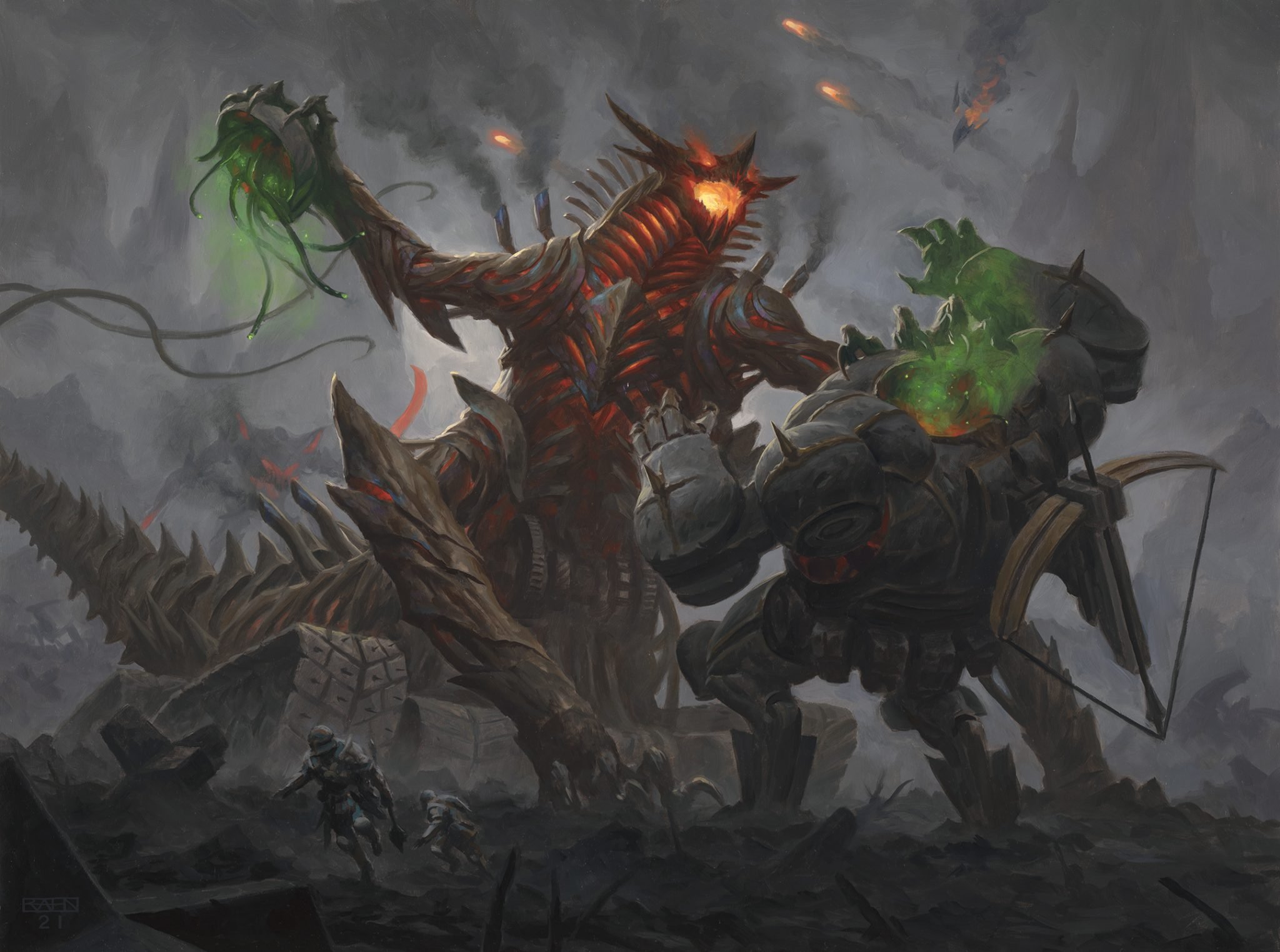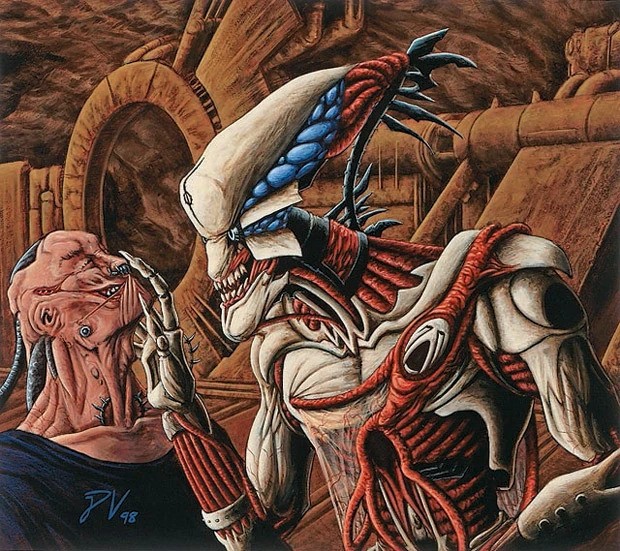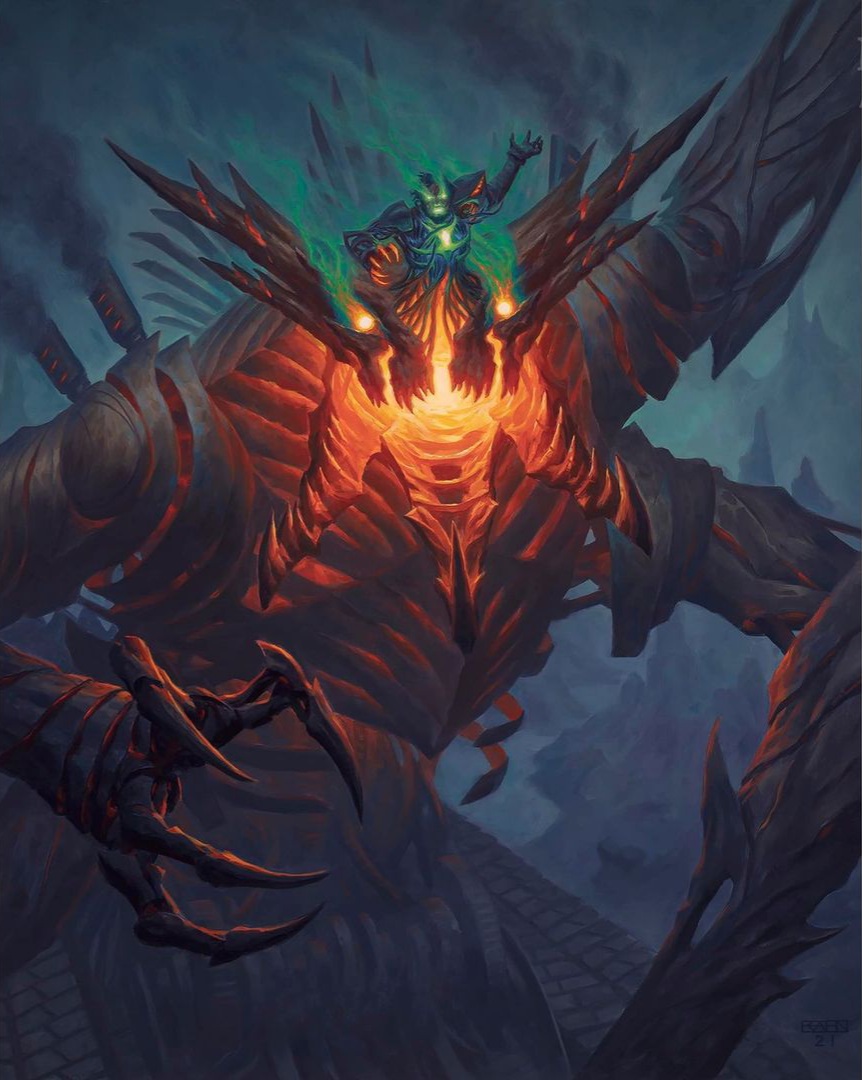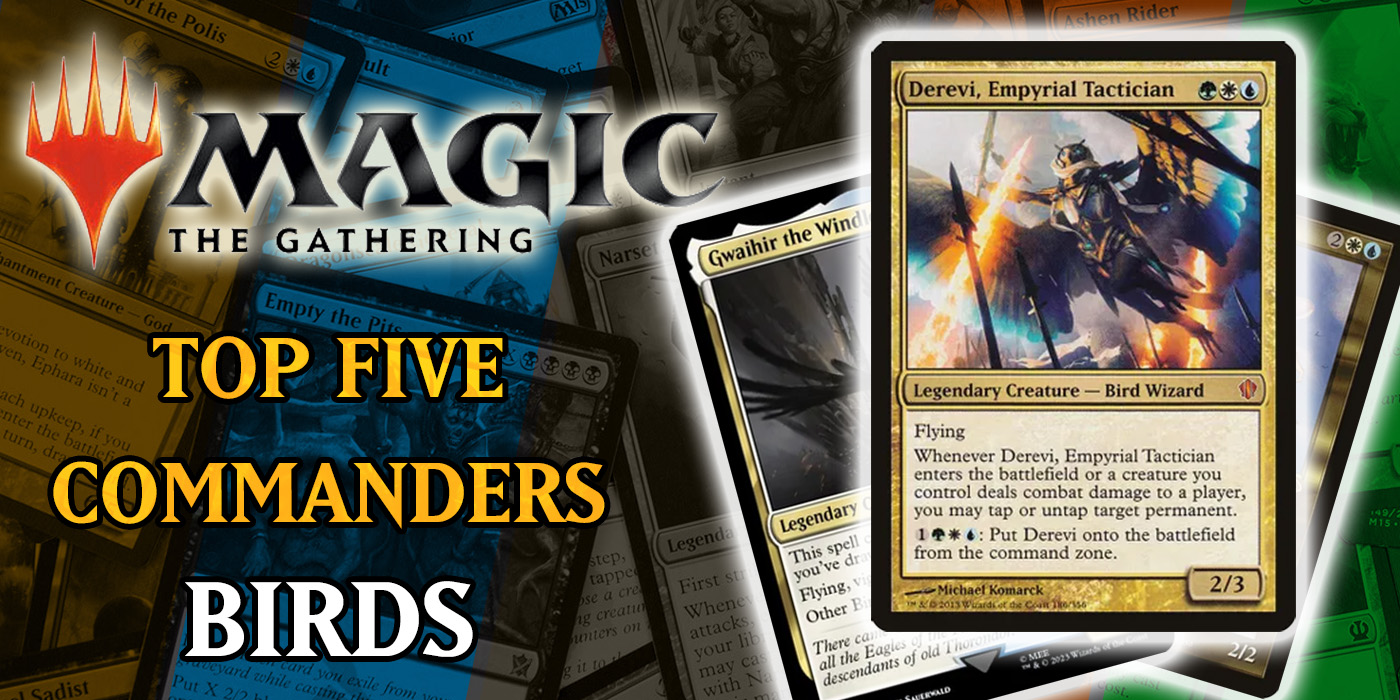MTG: Lore of the Multiverse – Mishra, Puppet of Gix
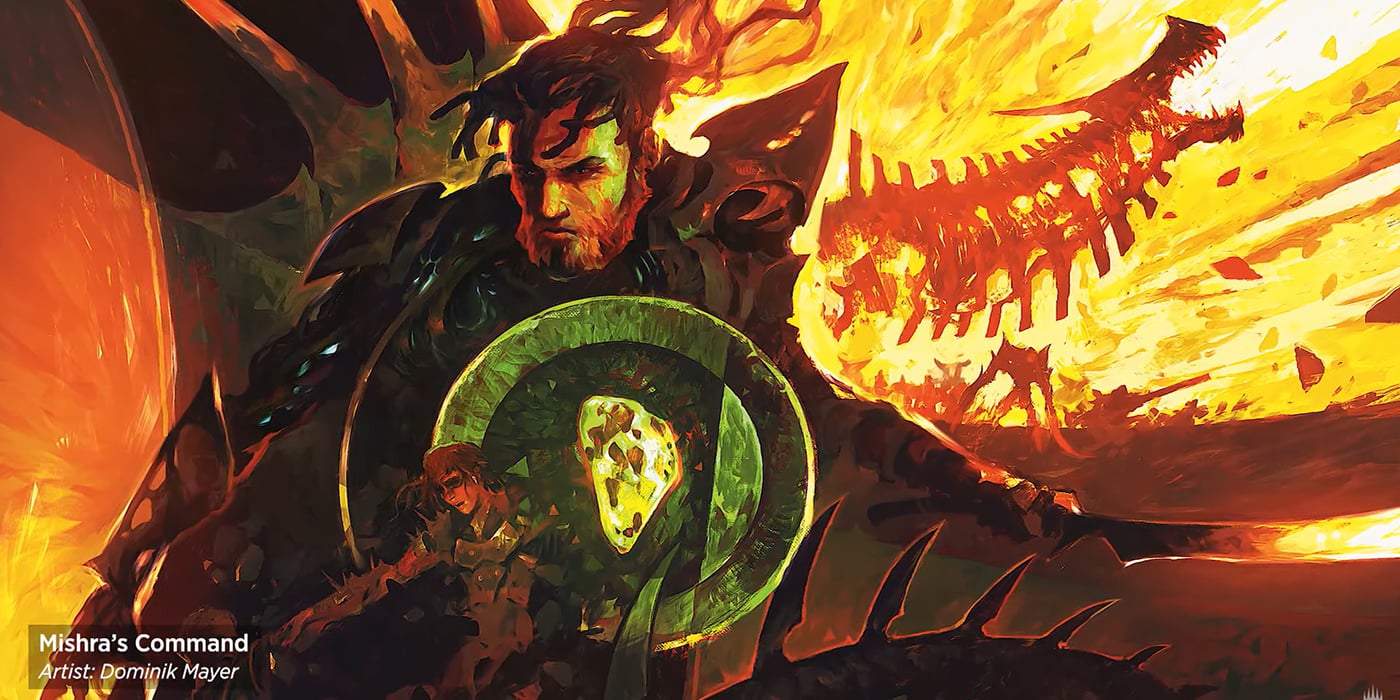
Sibling spats happen from time to time. When Phyrexia intervened, Mishra’s disagreement with his brother became a war.
Welcome, Praetors and Planeswalkers, to our ongoing series about the people and places that help make MTG incredible. From great heroes and deadly villains to gorgeous locales and important events, the Multiverse constantly evolves to keep the game fresh. Even if you don’t know anything about the story, all the background drives your favorite cards from place to place. You can check out all the previous MTG goodness over here.
Conflict has been the hallmark of Magic: The Gathering since its inception. Whether it’s a group of Planeswalkers battling an Elder Dragon who had become a god or a multiversal war against a mechanical enemy, battle is what defines the story. However, perhaps one of the most important wars in Dominaria’s history was the Brother’s War, the conflict between Urza and his younger brother Mishra. This battle set the stage for almost all future events, and allowed the Phyrexians a foothold in Dominaria.
Though neither brother is to blame for the events of the war (if Urza has no haters, then I am dead), Mishra was certainly the more actively antagonistic. By the end of the war, it is theorized that he had completely lost himself to the desire to destroy his brother. However, he didn’t start this way. Like Urza, he was just an orphan from Argive with an intellect beyond his years and an ambition he couldn’t control: the perfect breeding ground for Phyrexian influence.
Birth and Apprenticeship
Mishra was the second-born son of an Argivian noble, born at the end of the first year of the common age. His elder brother Urza was born at the beginning of the year, so there was barely a year between their ages. They lived reasonably normal lives until, sometime in their adolescence, their birth mother passed away. Their father remarried, and their new stepmother treated them poorly, urging their father to be rid of them often. When he fell ill around the year of their 10th birthday, their father sent them to the archaeologist Tocasia as apprentices.
Tocasia immediately took to the two boys, seeing in them both the potential for great things. They took to the study of Thran artifacts with gusto and were able to draw out the use of much of the ancient technology. As the boys grew, a rift began to grow between the brothers, and their personalities began to shift. Where Urza preferred to interact with the cold, lifeless artifice the team excavated, Mishra was much more personable. He loved to share stories with the other workers at the site and was well-liked. Before long, he became the overseer of Tocasia’s camp, proving himself a natural leader.
As they were studying the Thran artifacts, Urza noticed that they all seemed to circle a central location. Tocasia, Urza, and Mishra took an ornithopter to the site and discovered a massive Thran city. They called it “Koilos,” the Argivian word for “secret,” and began to delve deeper. At the center of the city they found a massive construct powered by an intact and active powerstone. While inspecting it, the machine detonated, knocking the team from their feet. When Mishra awoke, he found himself holding half of the cracked powerstone. His brother Urza had the other half. With the stones in hand, they left the site, and the dark work of Yawgmoth and Gix began.
Dark Dreams
The brothers found that their stones had odd effects on the world around them. Urza possessed what he called the Mightstone, which could amplify the strength of those around him. Mishra, on the other hand, held the Weakstone, which could sap the energy from living things and drain power from artifacts. Unfortunately, it had the side effect of plaguing his dreams with darkness, urging him deeper into the dig site. As it happened, these were the same stones that had bound Yawgmoth out of Dominaria, and his influence was working through them.
Driven mad by the dreams and Yawgmoth and Gix whispering in his ear, Mishra began to covet the Mightstone. He thought that with both the stones in his possession, he could master the Thran artifacts and usher in a new golden age. One night, deep in his cups, Mishra attempted to take the stone from his brother. A fight ensued, and the entire camp bore witness to the cataclysmic power of the two stones turned against each other. Tocasia tried to intervene but was caught in the blast of the stones’ energy and died. Mishra snapped out of his stupor and, seeing his mentor dead at his feet, fled into the desert.
Following the dark lure in his dreams, Mishra made his way towards the Caves of Koilos. Before he could reach them, however, he was captured by the Fallaji, a warrior people who called the desert home. They took the Weakstone and put him to work as a menial slave. Before long, however, a Fallaji named Hajar, who had worked Tocasia’s camp, recognized him. He convinced the leader of the Fallaji to appoint Mishra as his son’s teacher, and Mishra was immediately elevated. This wasn’t to last, though, as Fallaji culture viewed relying on others as a weakness. The leader planned to kill Mishra to protect his son, and likely would have, had Mishra’s latent power not awakened.
Taming Mak Fawa
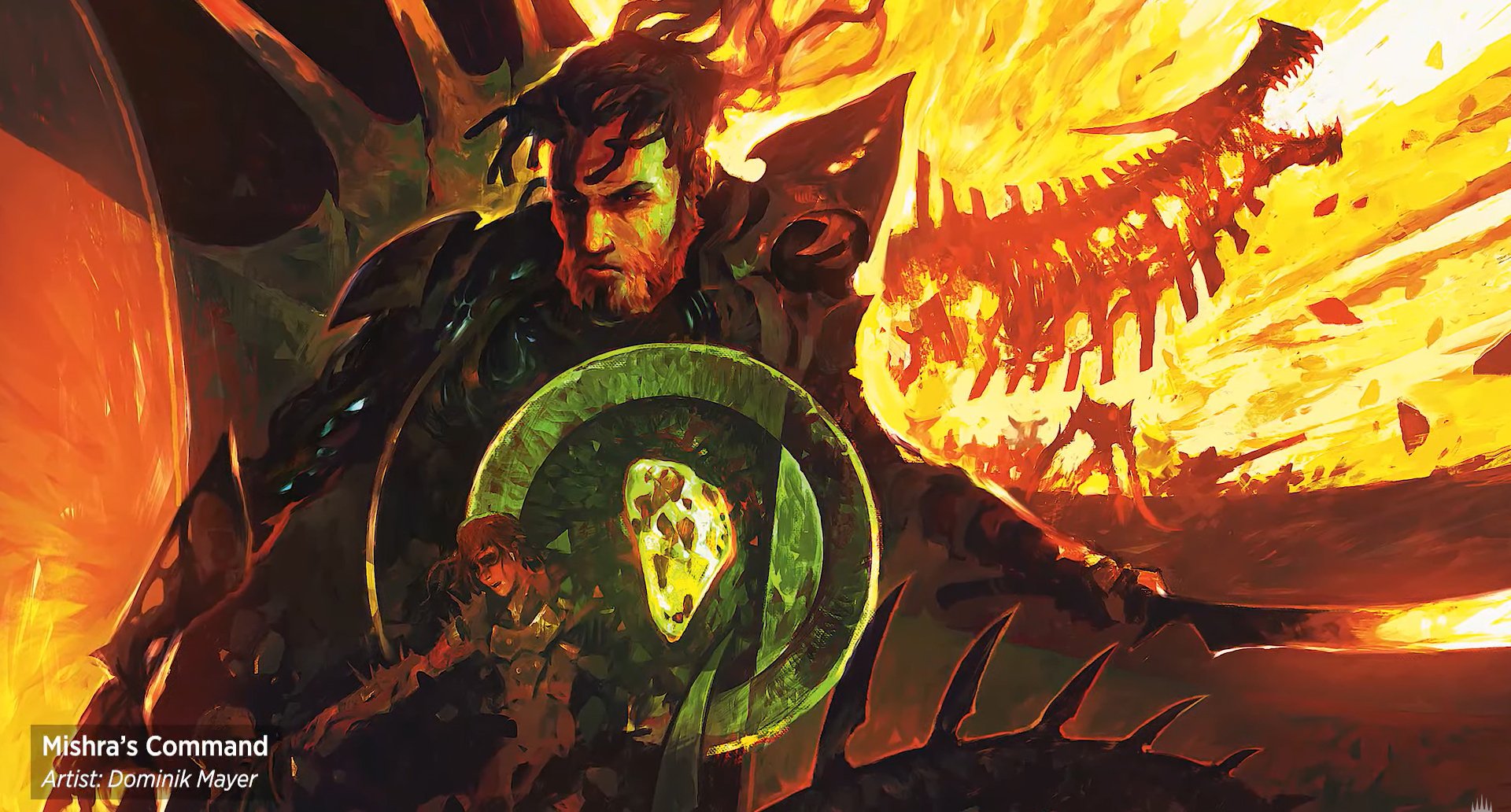
Mishra’s dreams continued to plague him, even as he taught the young prince about artifice and war. One night, he dreamt of a creature of metal and flesh, a horrible machine in a cruel parody of life. As he awoke, a terrible grinding sounded from the desert as a massive creature rose from the sands. It bore resemblance to a Dominarian dragon, but its eyes glowed with mechanical hellfire. The creature rampaged through the Fallaji settlement, killing the leader and many warriors that stood against it. Hajar and Mishra used the confusion to steal back the Weakstone, and went out to confront the beast. However, rather than weakening the creature, Mishra found he could directly control it. He named the creature Mak Fawa, the dragon engine, and claimed it as his weapon. The son he had tutored became the new leader, and named Mishra his Raki, his closest advisor.
Using Mak Fawa, Mishra was able to unify all the wayward Fallaji tribes under one banner. While on the campaign, he met a young artificer named Ashnod, who impressed him with her inventions. She became his apprentice and produced several devious weapons for him. At the time, the Fallaji were at war with the Yotians, a faction that Mishra’s brother Urza had allied himself with. A peace summit was proposed to end the war, but with all the Fallaji united, the summit failed.
After acquiring several more dragon engines, Mishra proposed another summit. During peace talks, he convinced Queen Kayla to steal the Mightstone from Urza and bring it to him. Urza discovered the plot and recovered his stone, and Mishra fled. Urza pursued him, hoping to end the conflict once and for all, but Mishra had planned for this. While Urza’s force left Kroog, the Yotian capital, undefended, Ashnod launched a massive siege. During the siege, she murdered the young leader of the Fallaji, making Mishra their new leader. The Brother’s War had begun.
Mishra No Longer
As the Brother’s War reached its apex, both factions were infiltrated by a group of artificers known as the Brotherhood of Gix. These fanatics worshipped the machines that Urza and Mishra built and operated, and though they couldn’t act openly in Yotia, Mishra accepted them with open arms. They became the leaders of his artificer forces, taking over recruiting promising candidates and instead subsuming them into their cult. Ashnod didn’t trust them, and their elevation jammed a wedge between her and Mishra. She eventually betrayed him, feeding intel to Tawnos, Urza’s apprentice, but not before the Brotherhood turned Mishra over to the Praetor Gix.
Gix replaced Mishra with a Phyrexian copy, though whether this was simply a simulacrum or Mishra had been compleated willingly was never known. Mishra was getting old, and suffering from a lung disease, so it wasn’t unheard of for him to choose Phyrexian unlife over death. However, as Gix had sworn to slay both brothers when they disturbed the powerstone, it is just as likely it was merely a construct wearing Mishra’s skin.
Brotherhood’s End
Realizing his brother was truly lost, Urza revealed him to be a Phyrexian machine. Mishra’s purpose had never been more clear, however, and he bound himself to Mak Fawa to become an abomination of flesh and metal. He battled Urza for control of Dominaria and the Mightstone and Weakstone. When he unleashed his full power against Urza, Urza activated the Golgothian Sylex he’d found in the ruins of Thran, annihilating Mishra and the sentient forest below. Though he won the war, Urza would suffer the consequences of this action for the rest of his life.
It is unknown if Mishra survived the war, as he was later used to torment Urza when he invaded Phyrexia to face Yawgmoth. However, Urza’s mind was unbalanced by then, and the vision of a tormented Mishra was as likely a hallucination as an actual event. Either way, the selfishness of the two brothers caused ripples that echo in the lore even now. The Phyrexians may be banished, but that never stopped them before…
What Lore would you like to see next?

